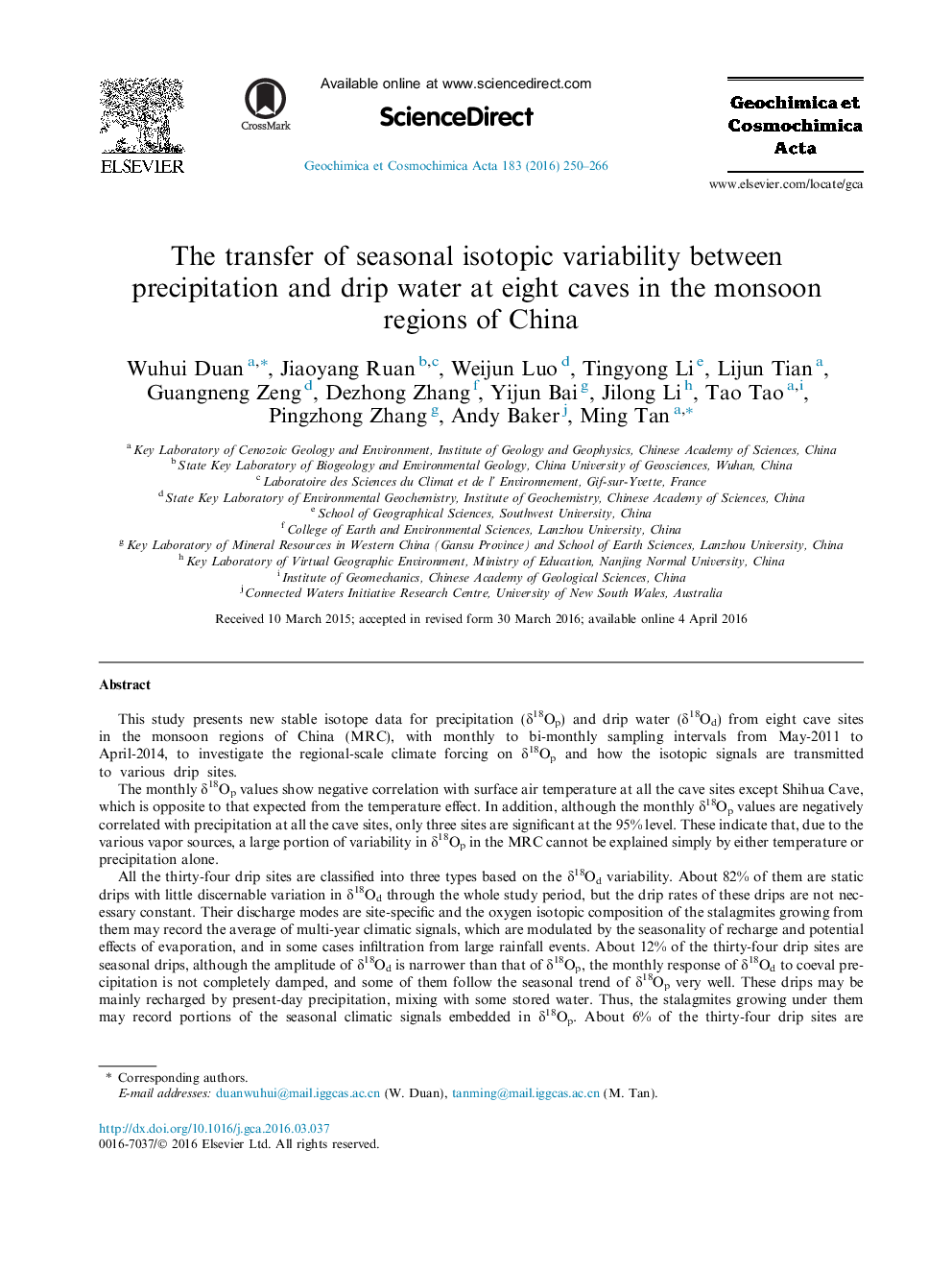| Article ID | Journal | Published Year | Pages | File Type |
|---|---|---|---|---|
| 6437230 | Geochimica et Cosmochimica Acta | 2016 | 17 Pages |
This study presents new stable isotope data for precipitation (δ18Op) and drip water (δ18Od) from eight cave sites in the monsoon regions of China (MRC), with monthly to bi-monthly sampling intervals from May-2011 to April-2014, to investigate the regional-scale climate forcing on δ18Op and how the isotopic signals are transmitted to various drip sites.The monthly δ18Op values show negative correlation with surface air temperature at all the cave sites except Shihua Cave, which is opposite to that expected from the temperature effect. In addition, although the monthly δ18Op values are negatively correlated with precipitation at all the cave sites, only three sites are significant at the 95% level. These indicate that, due to the various vapor sources, a large portion of variability in δ18Op in the MRC cannot be explained simply by either temperature or precipitation alone.All the thirty-four drip sites are classified into three types based on the δ18Od variability. About 82% of them are static drips with little discernable variation in δ18Od through the whole study period, but the drip rates of these drips are not necessary constant. Their discharge modes are site-specific and the oxygen isotopic composition of the stalagmites growing from them may record the average of multi-year climatic signals, which are modulated by the seasonality of recharge and potential effects of evaporation, and in some cases infiltration from large rainfall events. About 12% of the thirty-four drip sites are seasonal drips, although the amplitude of δ18Od is narrower than that of δ18Op, the monthly response of δ18Od to coeval precipitation is not completely damped, and some of them follow the seasonal trend of δ18Op very well. These drips may be mainly recharged by present-day precipitation, mixing with some stored water. Thus, the stalagmites growing under them may record portions of the seasonal climatic signals embedded in δ18Op. About 6% of the thirty-four drip sites are medium-variability drips, with constant and relatively low δ18Od values in the wet season, but with variable and relatively high δ18Od values in the dry season, reflecting flow switching in the karst or evaporation inside the cave.
